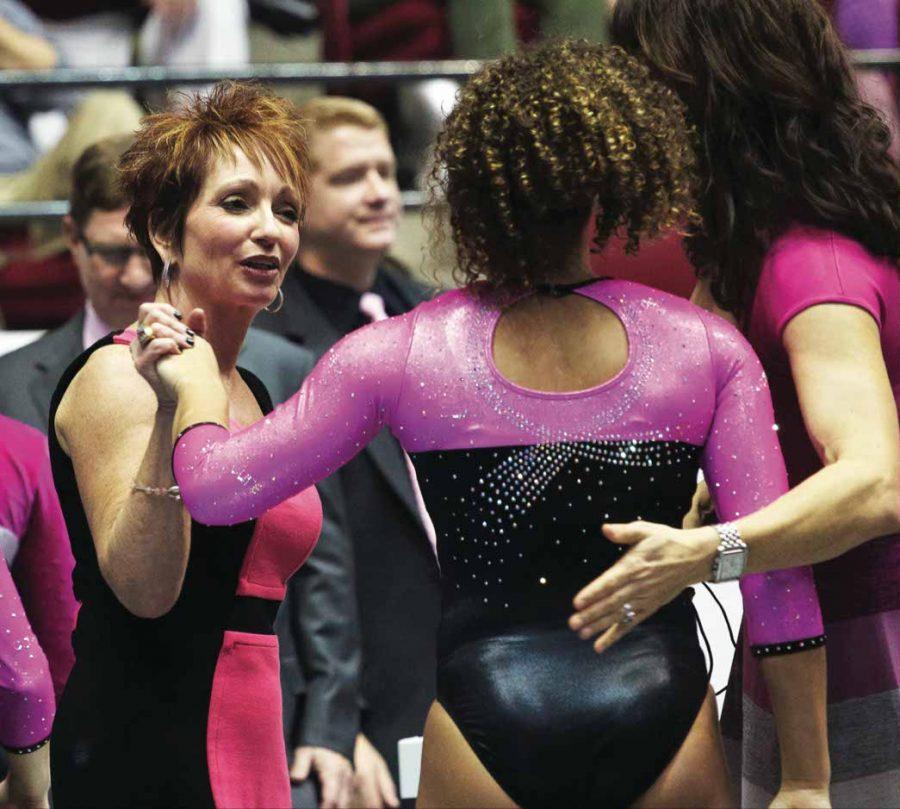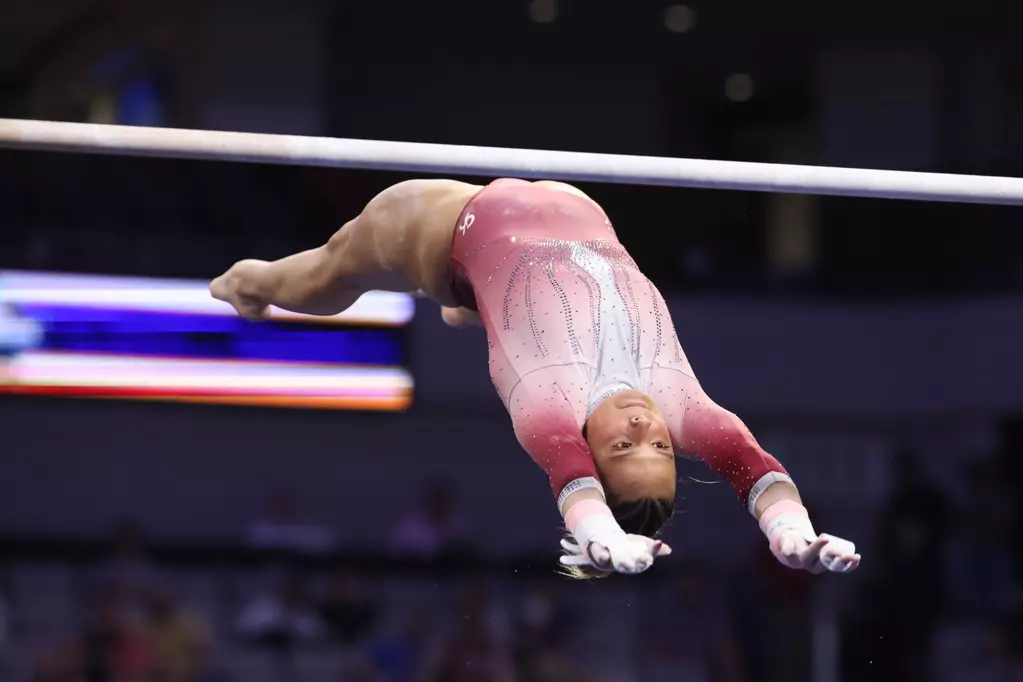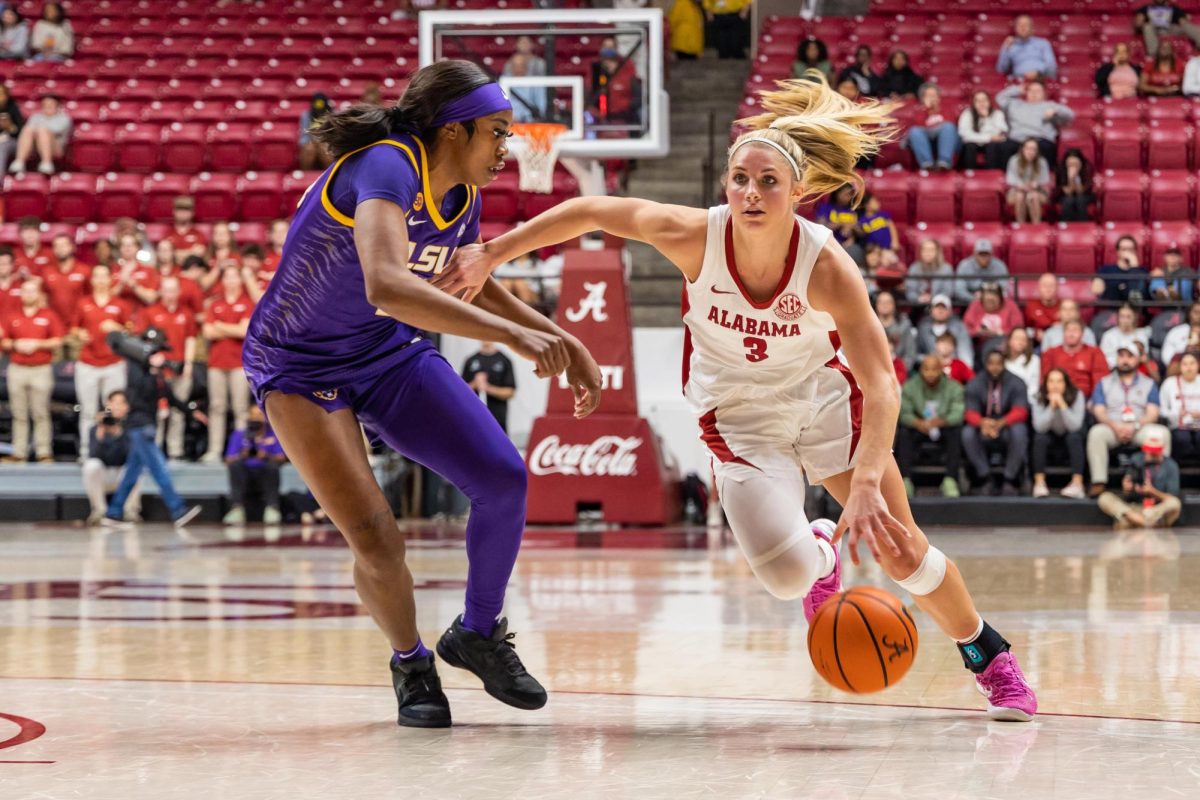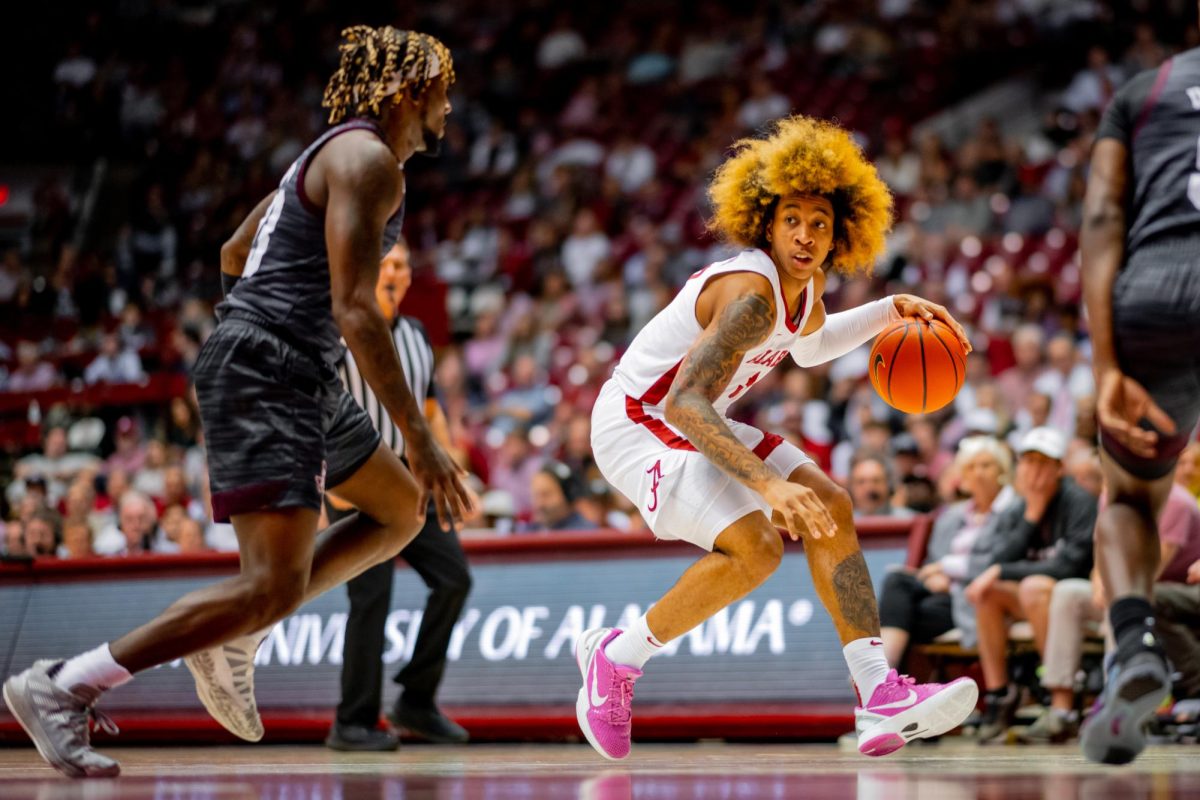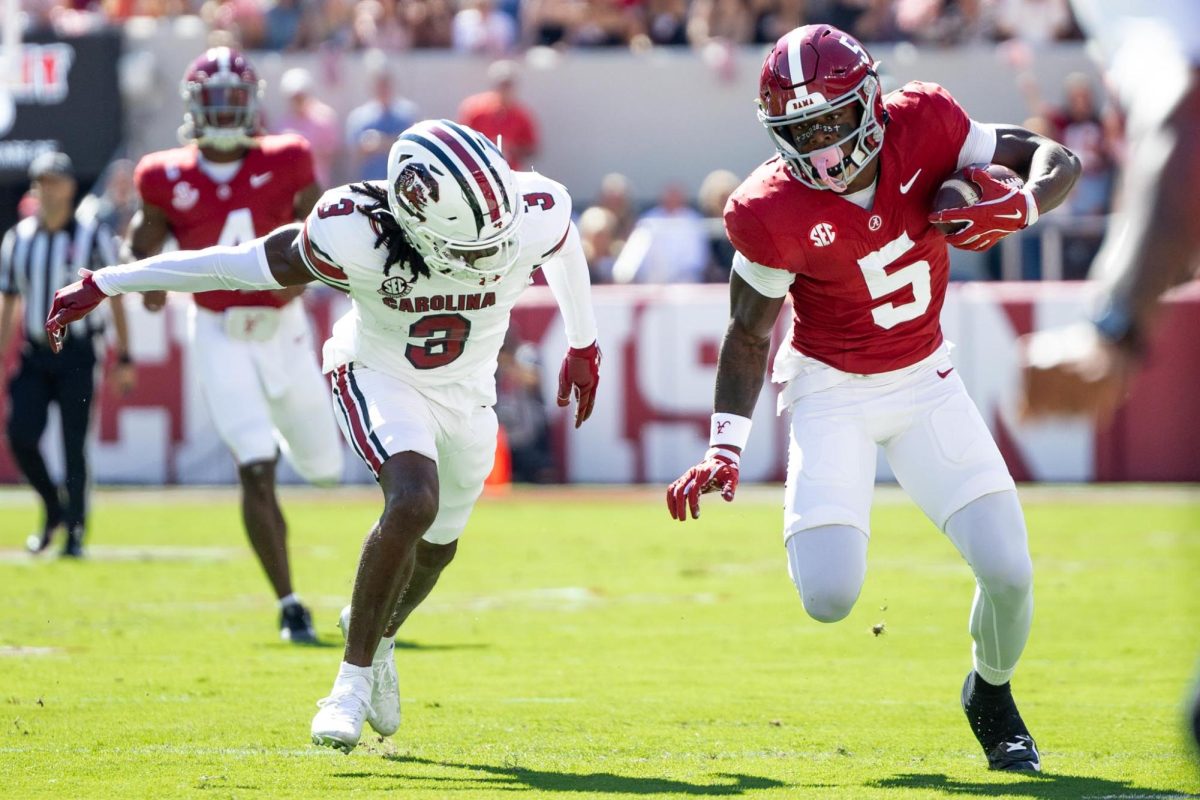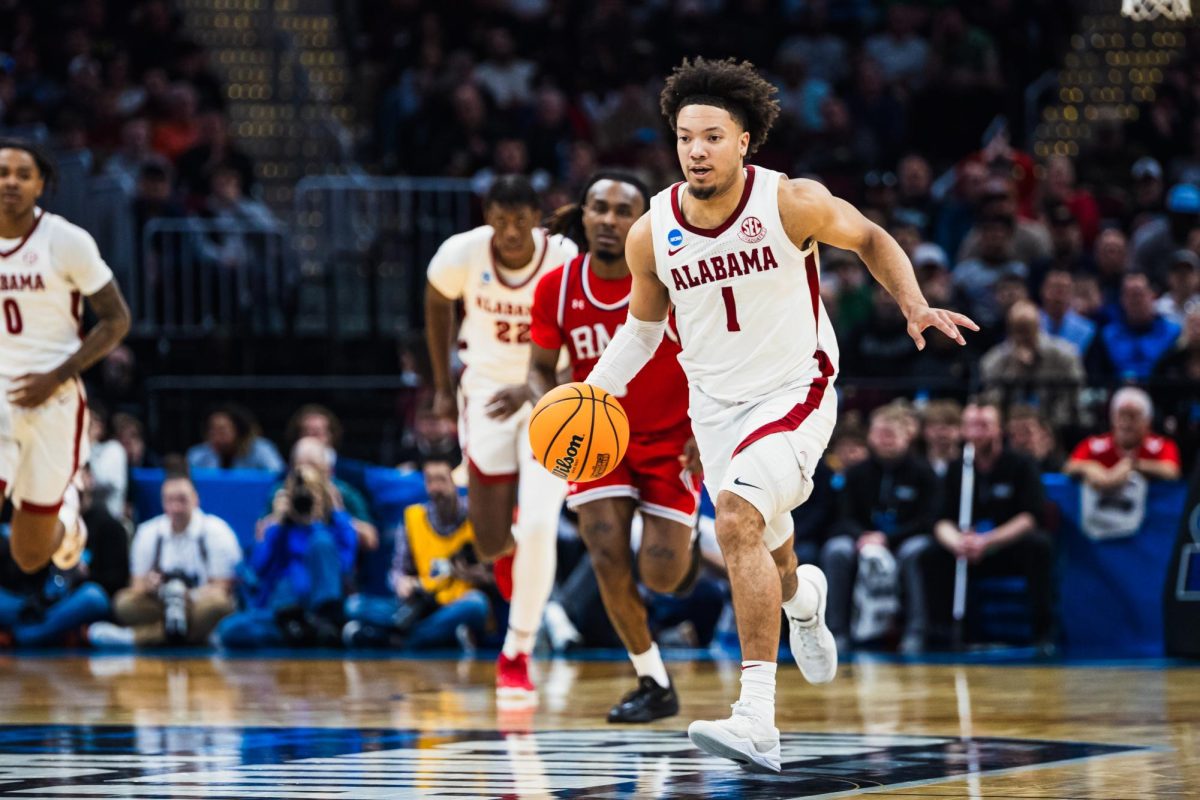Sarah Patterson walks down the hallway of the gymnastics offices and stops to admire two pictures hanging on the wall just outside her office.
The first shows the inside of Coleman Coliseum during one of the first “Power of Pink” meets. Both teams are wearing pink leotards, and the fans are waving pink shakers.
She walks down the hall a little farther and stops.
“This one is my favorite,” Patterson says.
It’s another picture of Coleman, but from the outside. It’s just before sunset and the parking lot is empty. But the Coliseum is lit up with pink lights, creating a soft glow around the venue.
Patterson, now in her 36th season as the UA gymnastics coach, had an idea to “pink out” a gymnastics meet 10 years ago, an idea that has spread across the athletic department and campus, and the effects of which can be seen around the country.
Power of Pink has raised $1.35 million through last season for the DCH Breast Cancer Fund. The Tuscaloosa News regularly features a special section on their sports page for the meet. This month, the volleyball, cross-country and soccer teams will host pink events, with the rest of the women’s teams following suit during their seasons.
“Now, it’s not just one event,” Patterson said. “There’s events all across campus and across the country [and,] hopefully, we’re doing something to make a difference.”
The pink movement has gone national with the help of coaches like Patterson and events like the Power of Pink. The NFL started its “A Crucial Catch” campaign during the 2011 season, where players wore pink during games. On Mother’s Day, Major League Baseball players use pink bats. College and pro teams around the country wear pink or have their own pink events.
“I think it’s a wonderful thing that our athletic department does. I think it’s a wonderful thing that we do across the NCAA to try to make people more aware of the circumstances and the situation, so we can do more about helping people who are afflicted,” Alabama football coach Nick Saban said. “I’m all in to help and to also appreciate what other people, like Sarah, have done.”
Like any movement, it started with an idea.
Patterson had trouble passing a routine mammogram. She had top-notch health insurance, but looked across the DCH waiting room and saw moms with two children and no health insurance waiting on results or trying to figure out how to get treatment.
Patterson ended up being healthy, but she couldn’t shake the feeling she got seeing people struggle to find care for breast cancer. So in 2004 she started the DCH Breast Cancer fund and on Feb. 5, 2005, she held the first Power of Pink gymnastics meet for a meet against Auburn. And the support poured in.
Members of the Zeta Tau Alpha sorority laid out pink shirts and shakers in all of the seats. The owner of the company that made Alabama’s leotards’ wife had breast cancer, so the company provided pink leotards for Alabama and Auburn.
“It was just so surreal,” Patterson said.
Since that day, the Power of Pink has exploded into a week-long event with the gymnastics meet serving as the grand finale.
Now many parts of campus are lit pink the week before the meet – Denny Chimes, the outside of the Coliseum, the dome on the Student Recreation Center. The water in the fountain at the Ferguson Center is dyed pink, and sorority houses on sorority row place pink luminaries outside of their houses.
The pink events in other sports are often the most popular games, matches or meets, with fans showing up in droves to wear pink.
“It seems like every time we do it we have a sellout crowd,” softball coach Patrick Murphy said. “It’s unbelievable.”
In 2009, the gymnastics team started a tradition of introducing a survivor with each gymnast before the meet. For former UA gymnast Ashley Sledge, it was a special moment as a freshman to walk out with her aunt, Patricia Davis, who is a survivor.
“She was just so excited to be able to stand up on the ‘A.’ I was so excited to be up there with her,” Sledge said. “It was amazing. She had such a great time. It’s something she’ll never forget.”
Patterson said it’s easy to see why everyone can get behind the cause.
“Everybody is touched by someone that has breast cancer,” she said. “Whether it’s a friend, mother, a sister, a grandmother. It’s hard to find someone that isn’t affected by it. I think that’s why people have become so passionate about it.”
Two members of Patterson’s first recruiting class are breast cancer survivors. Her mother-in-law is a survivor of the disease. Volleyball coach Ed Allen’s mother passed away from the disease.
“The opportunity to support a cause that is maybe the most worthy cause we have going right now – probably claiming more lives than any other illness that we have – it’s great that we can participate in that and be a part of that,” Allen said. “If we talk about making a difference in the world, this is an area where we can make a difference in the world.”
Patterson was walking around the grocery store one day when a woman recognized her and stopped to talk to her.
“Aren’t you the pink lady?” she asked Patterson.
The coach, hired by Paul “Bear” Bryant in 1978 who’s won six national titles, is now known for so much more.
“It’s not ‘Oh, my God, I can’t believe they won back-to-back titles,’” said Jessie Jones, Patterson’s daughter and a UA communications specialist for student affairs. “It’s ‘I can’t believe what a difference she’s made in our community.’”
What started as an idea for a gymnastics meet has turned into a campus-wide movement that is no longer constrained to one month or one meet.
“I have the best job in the country as a gymnastics coach,” Patterson said. “But when that woman called me the pink lady, it made me realize that you just always have to keep doing this and pushing people and helping them create their event because you are doing this for others.”



